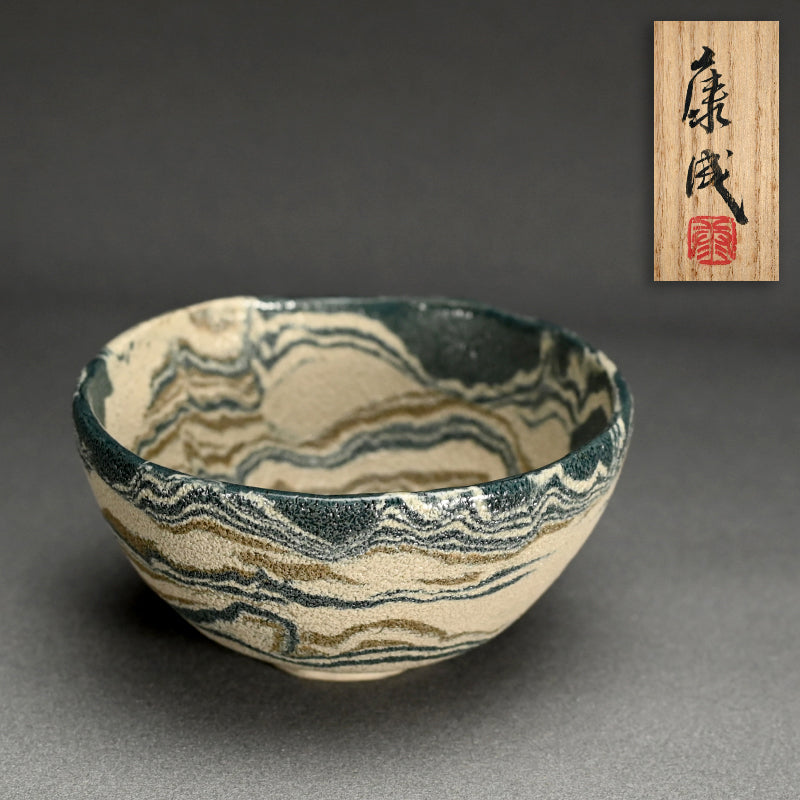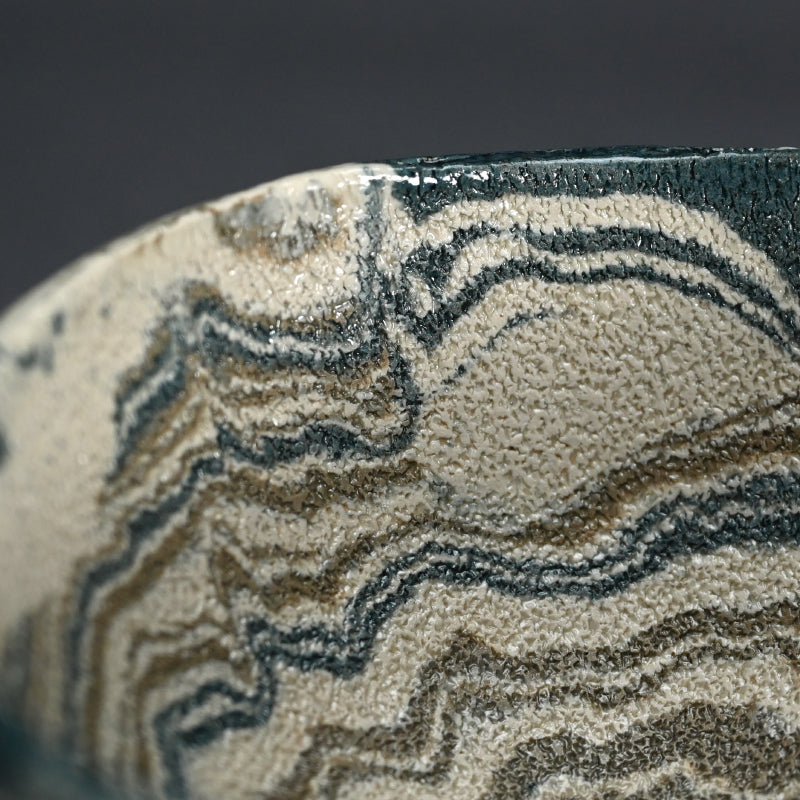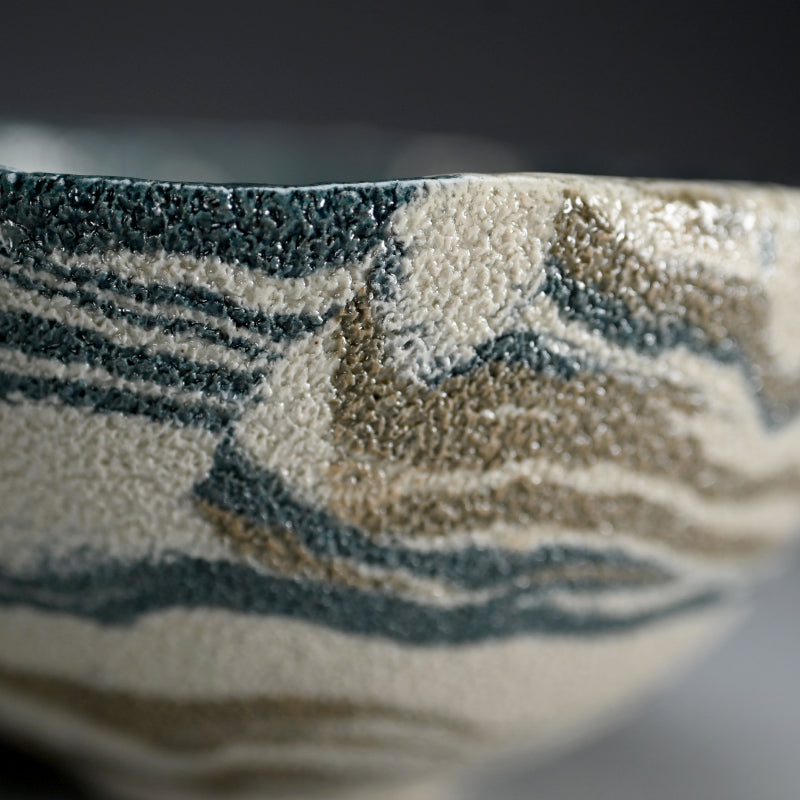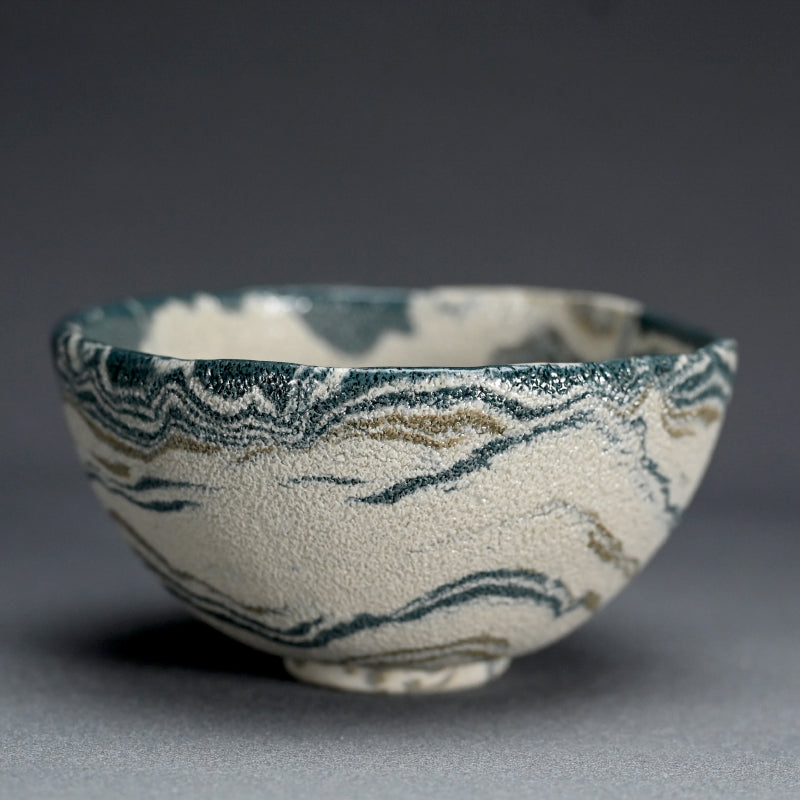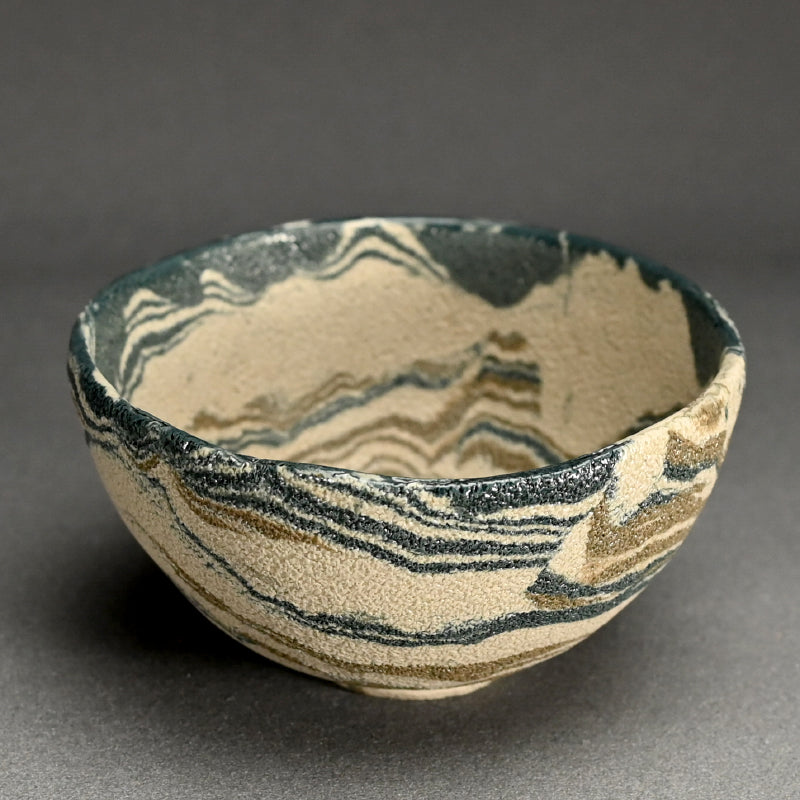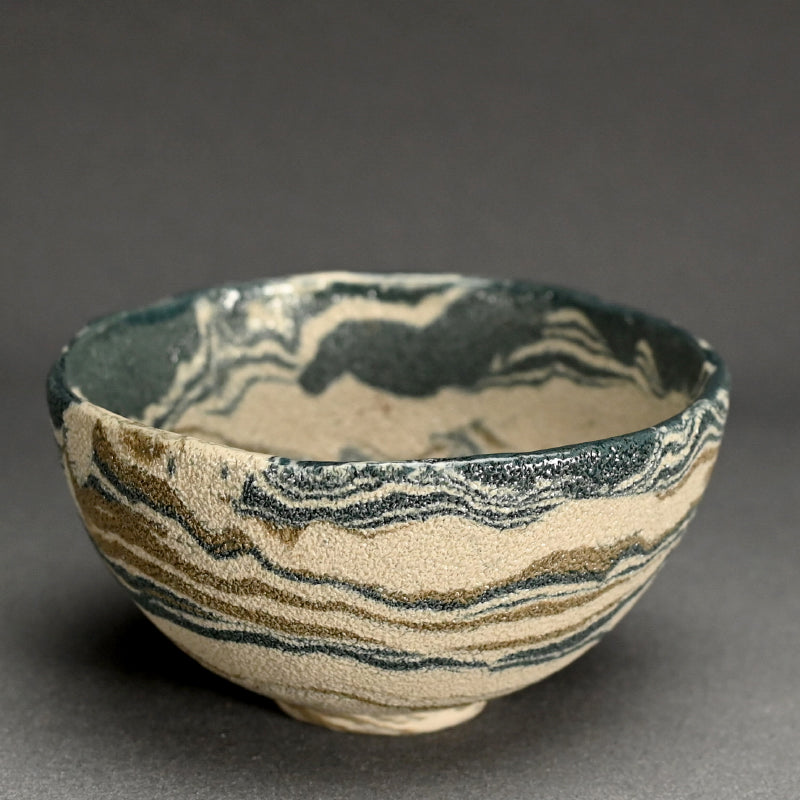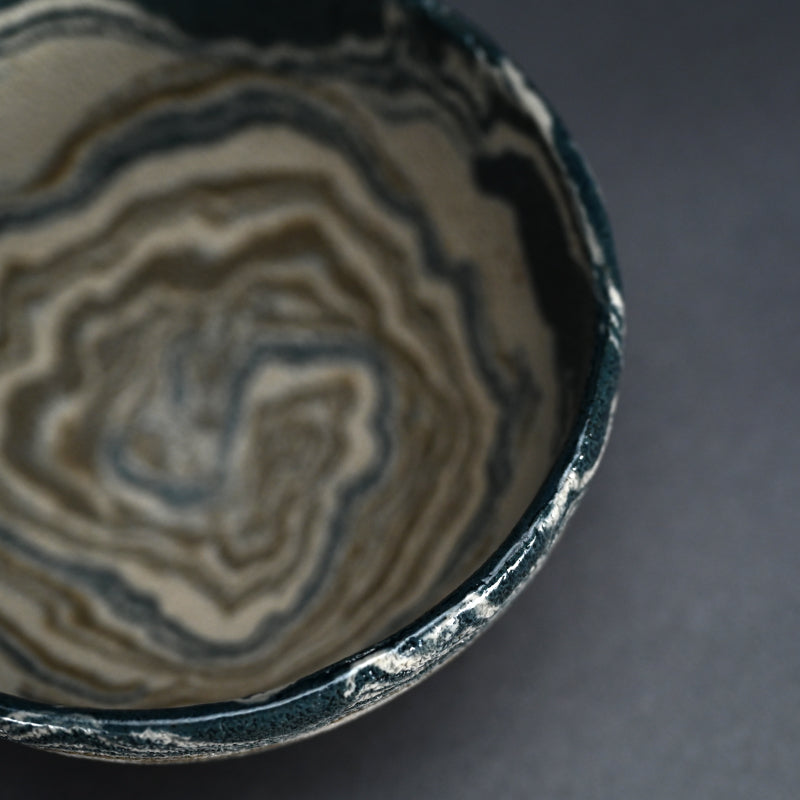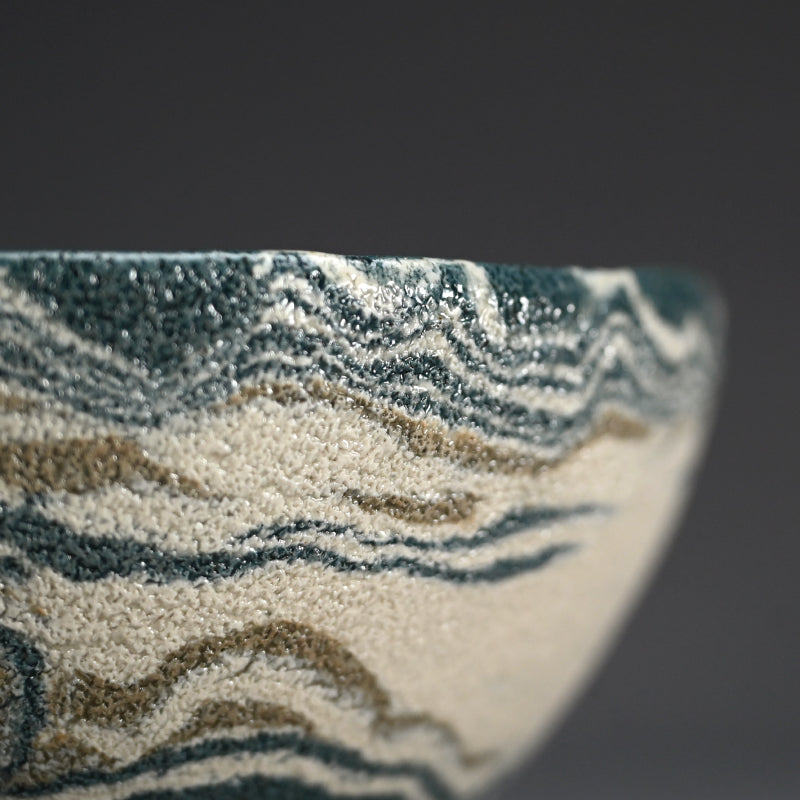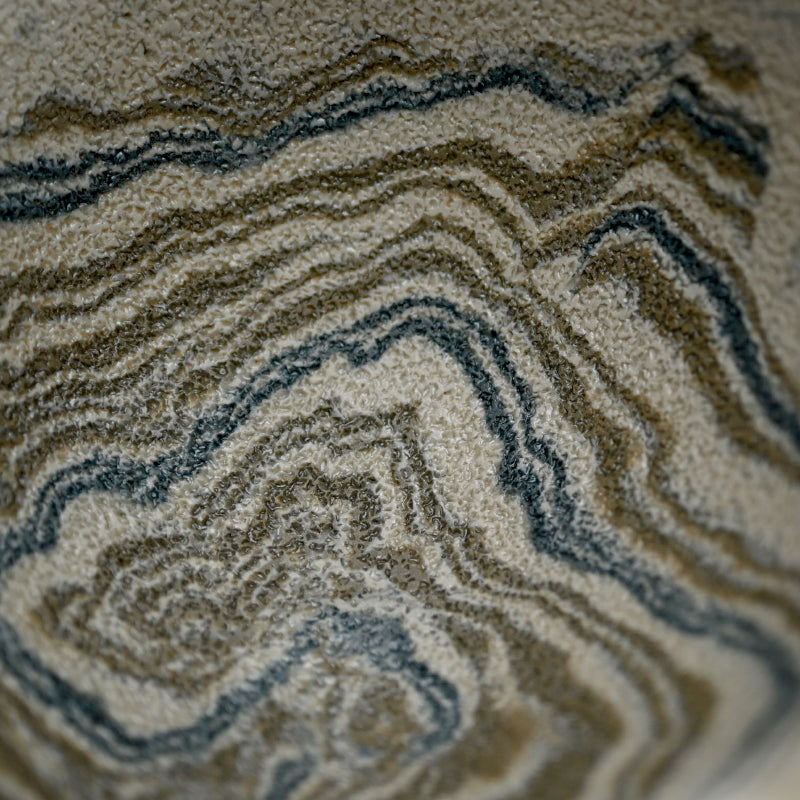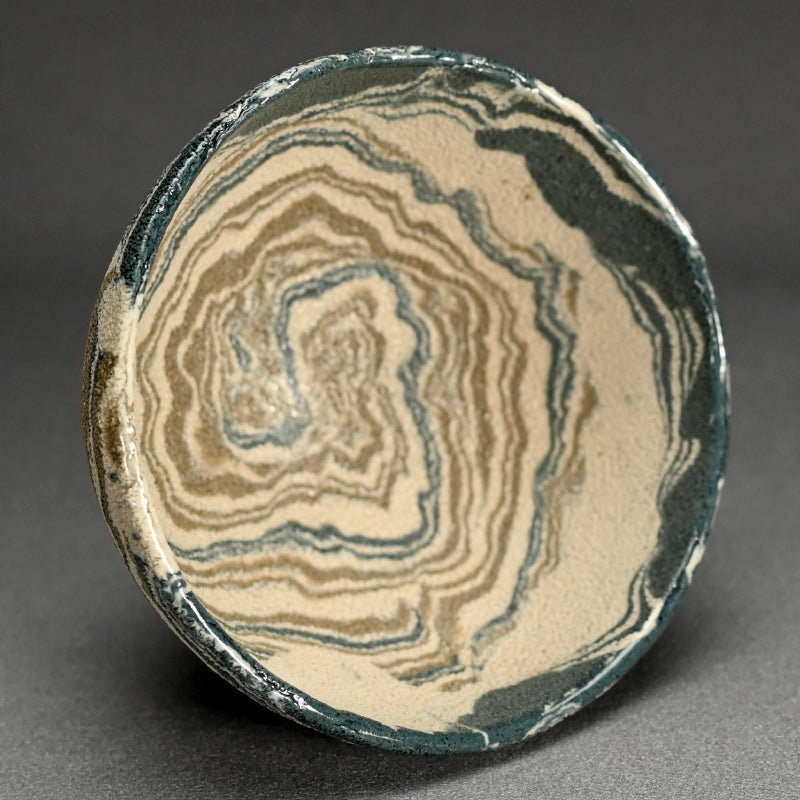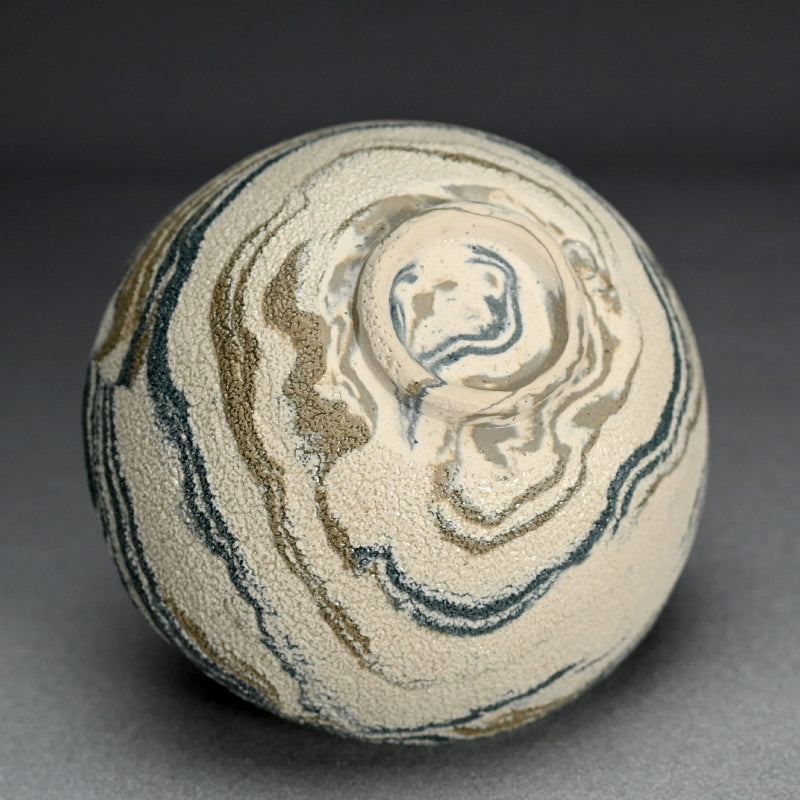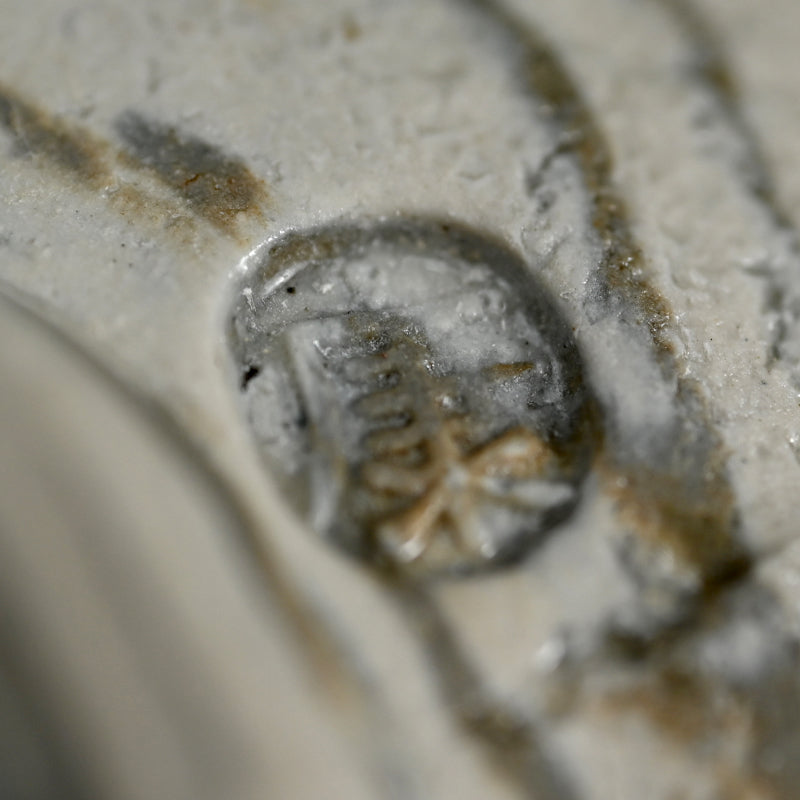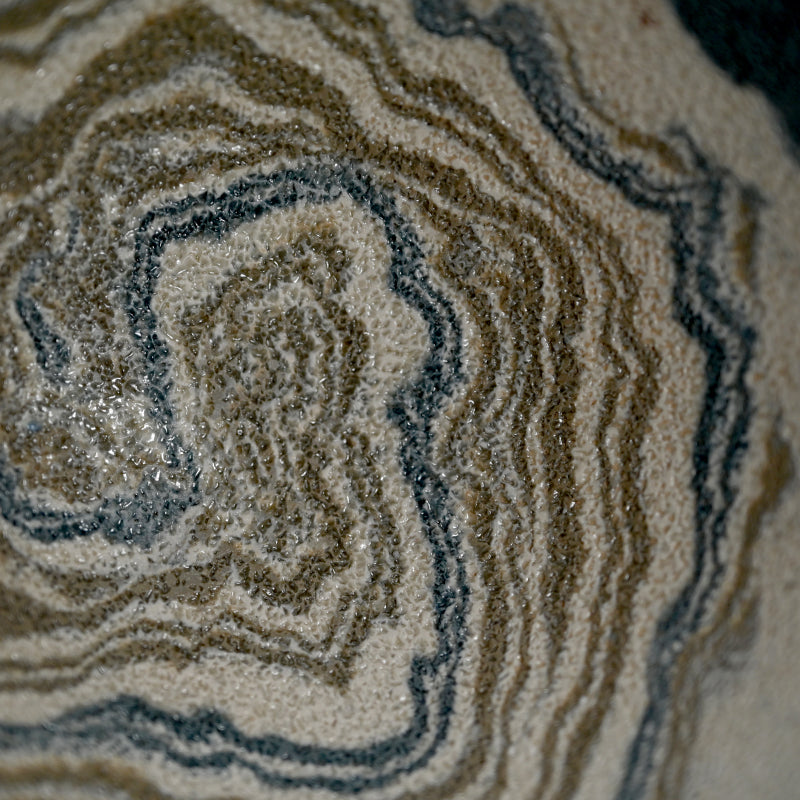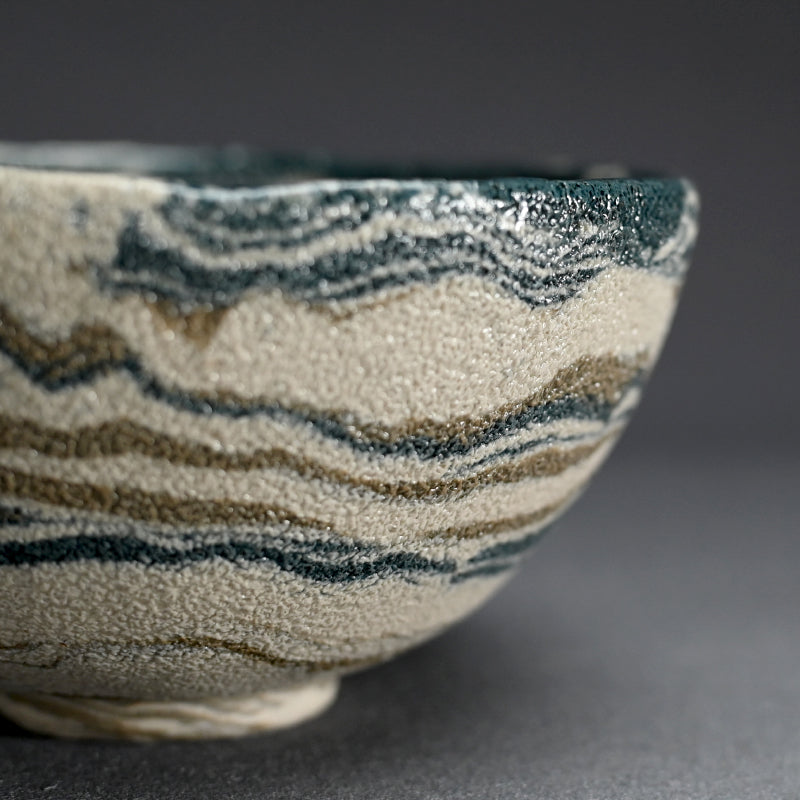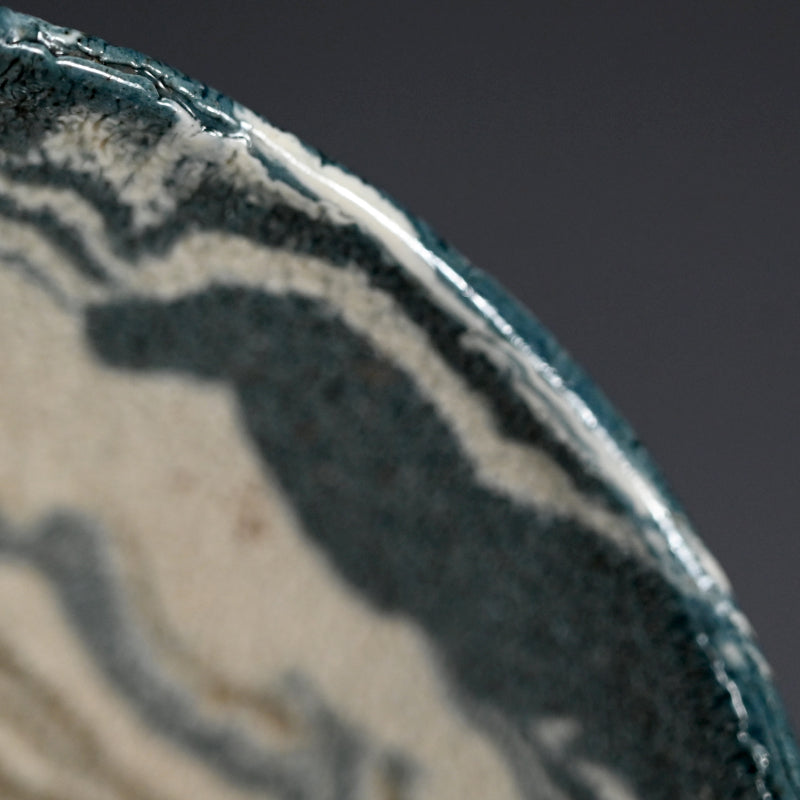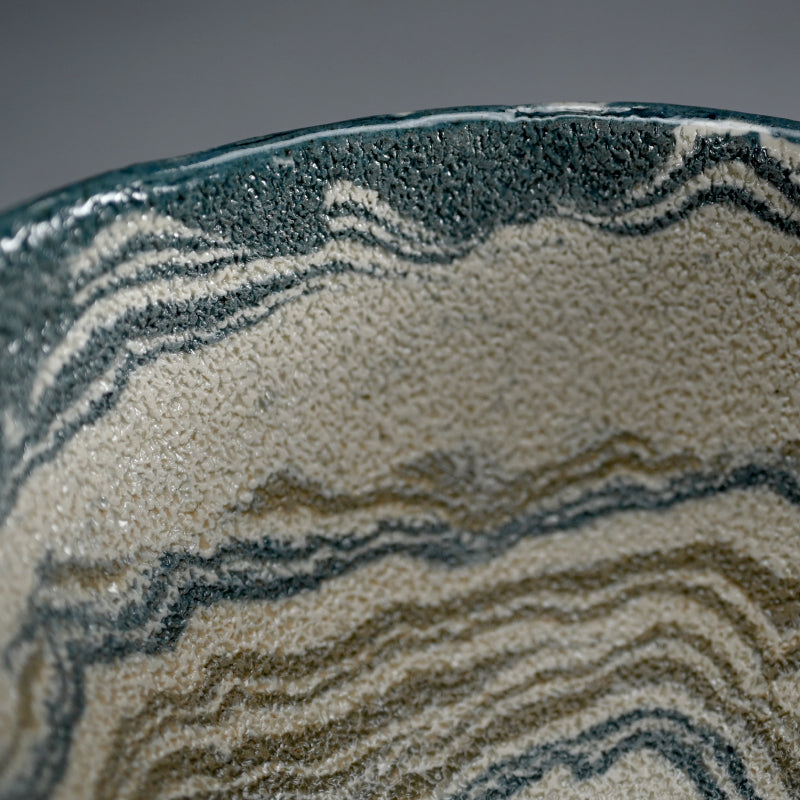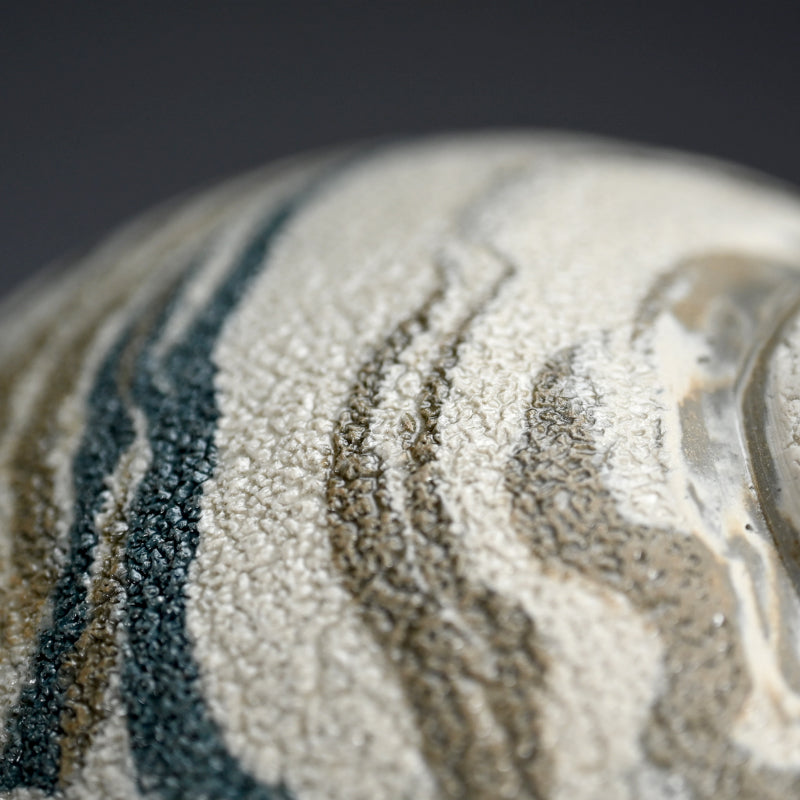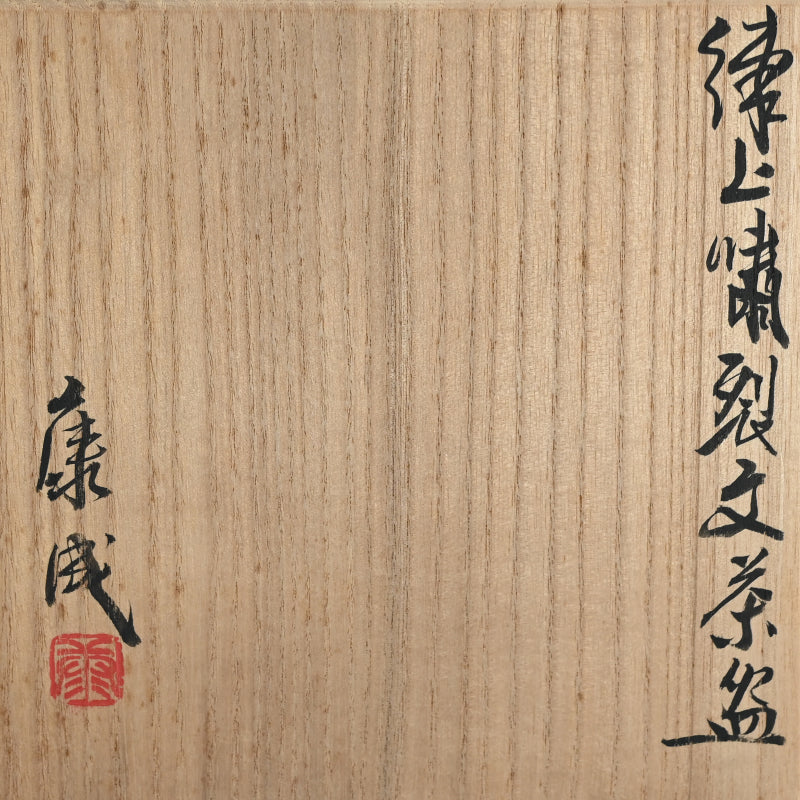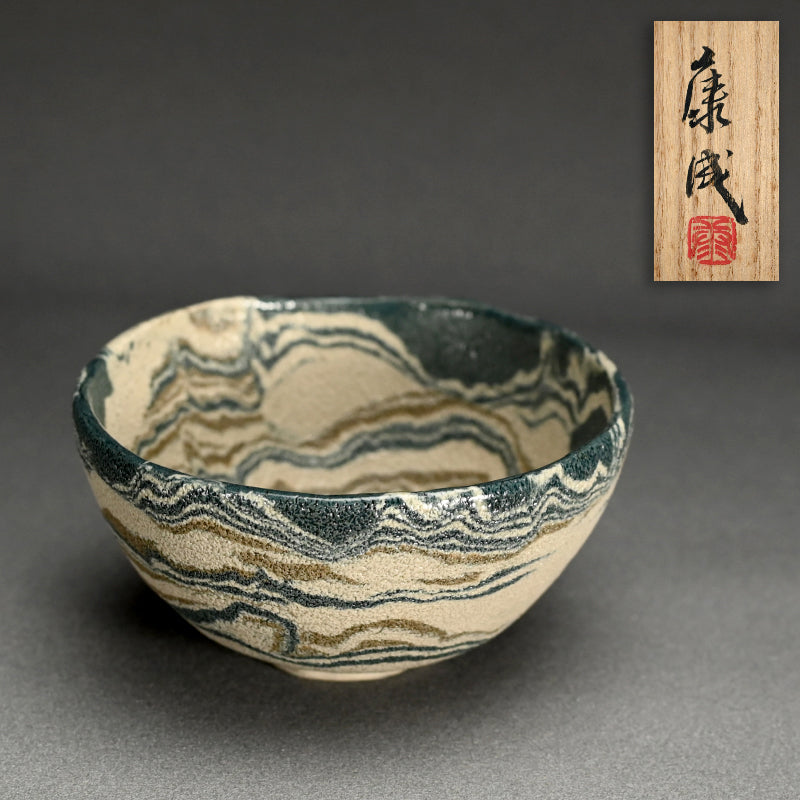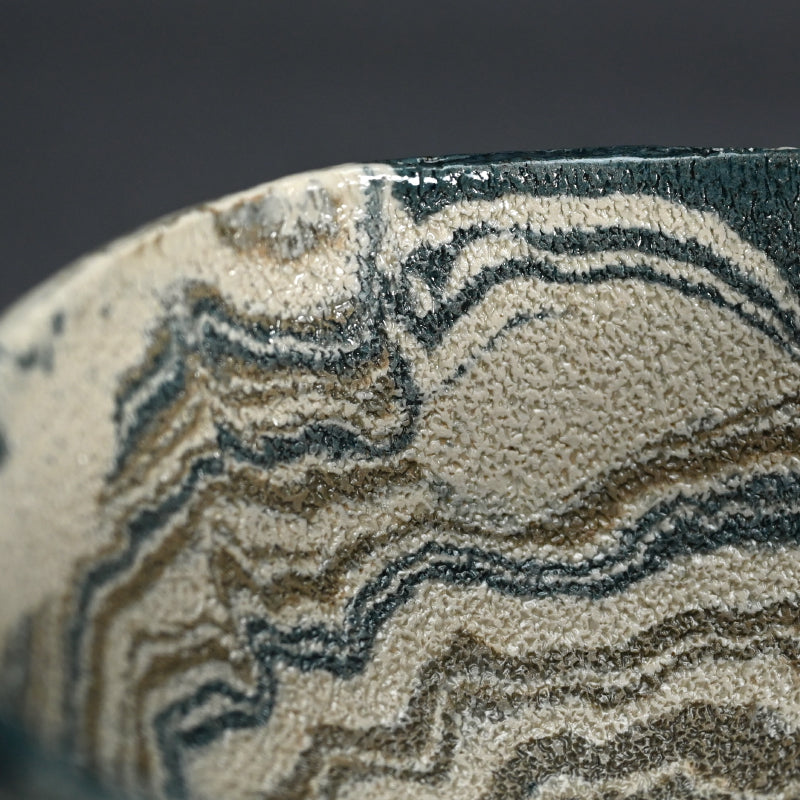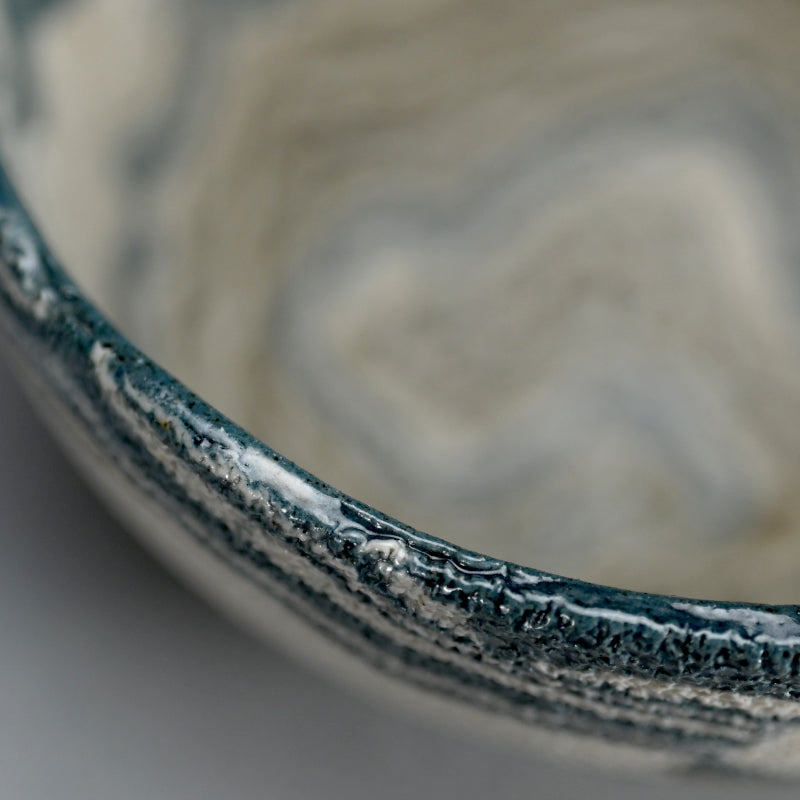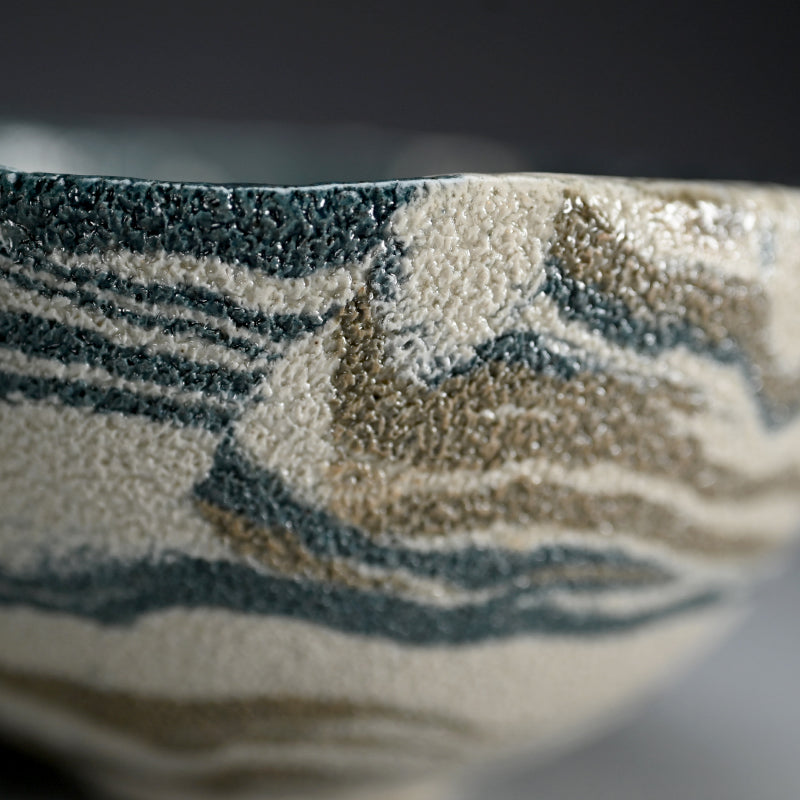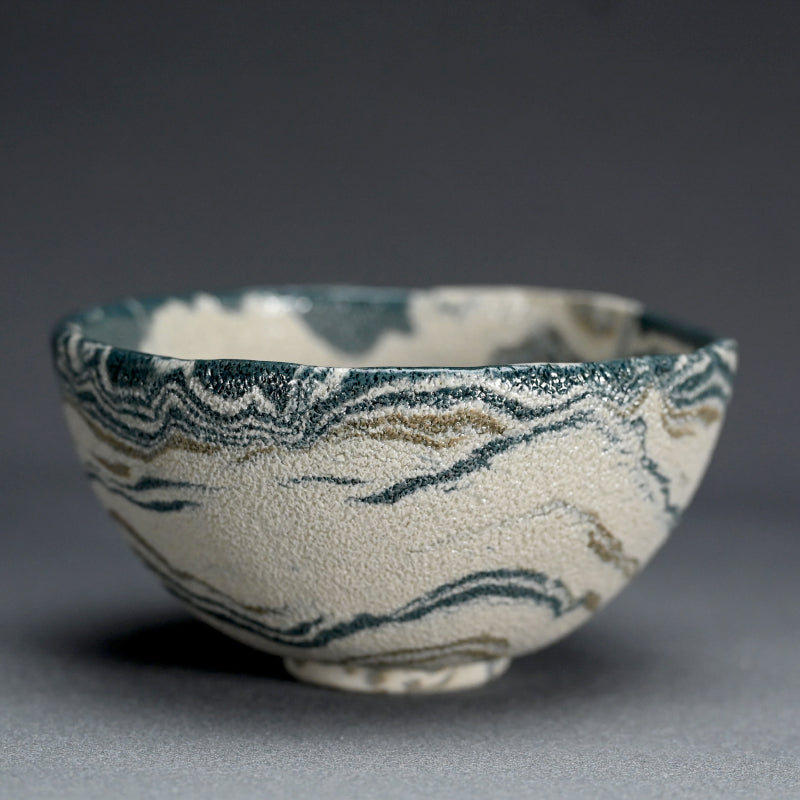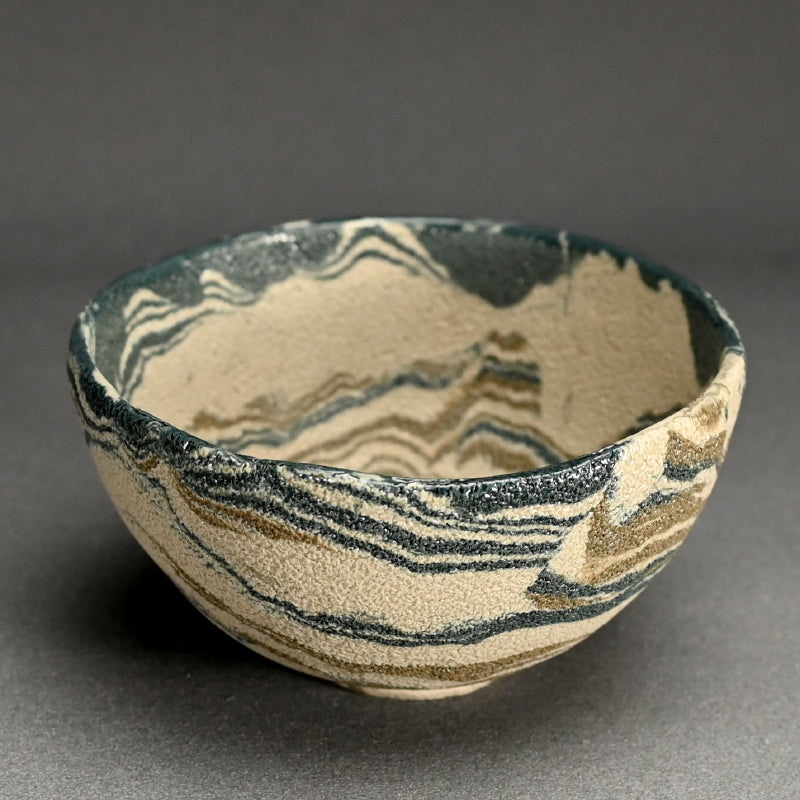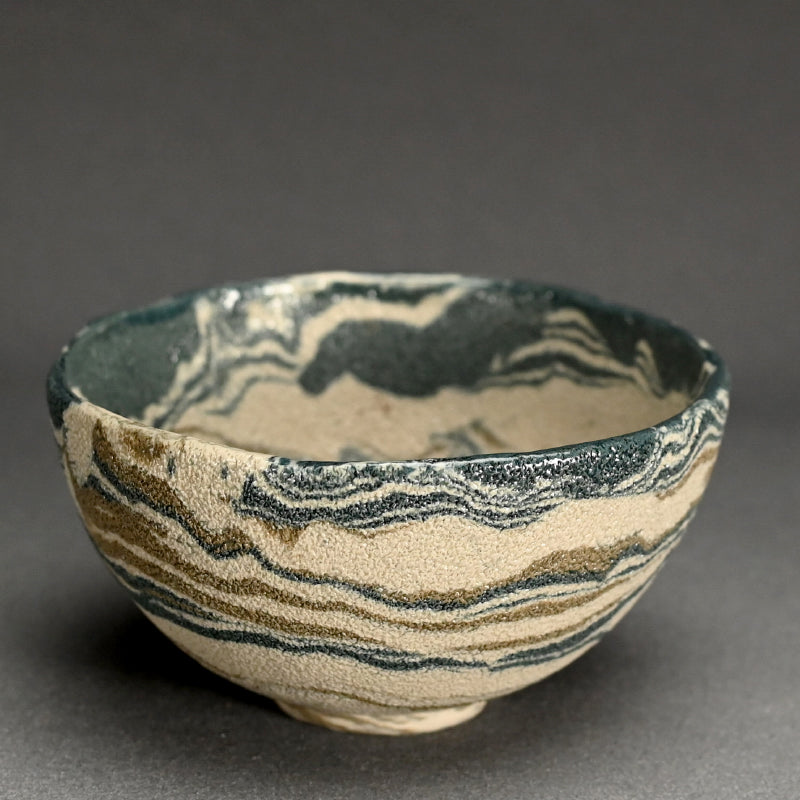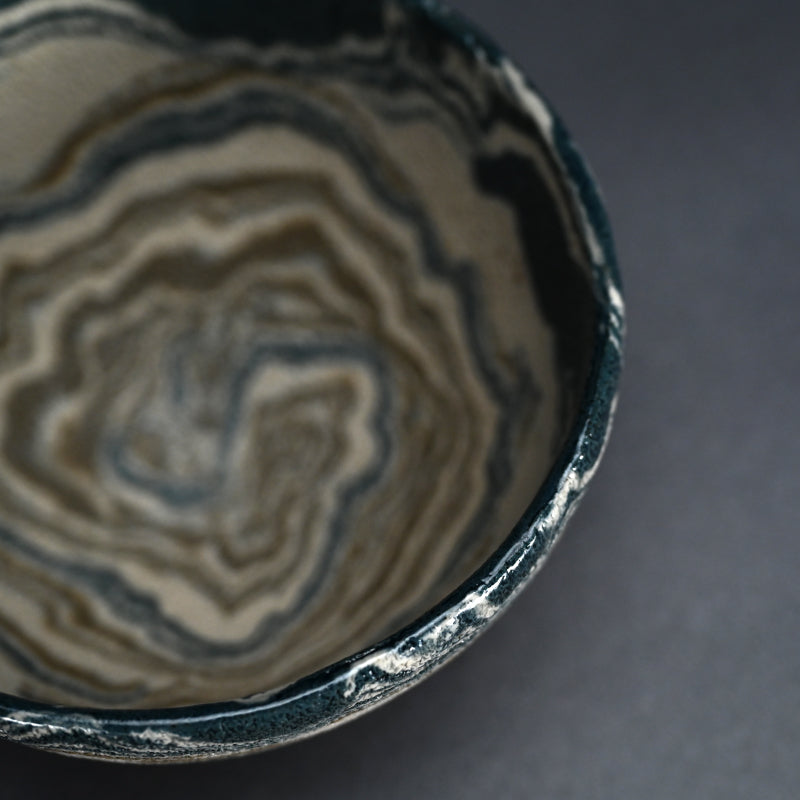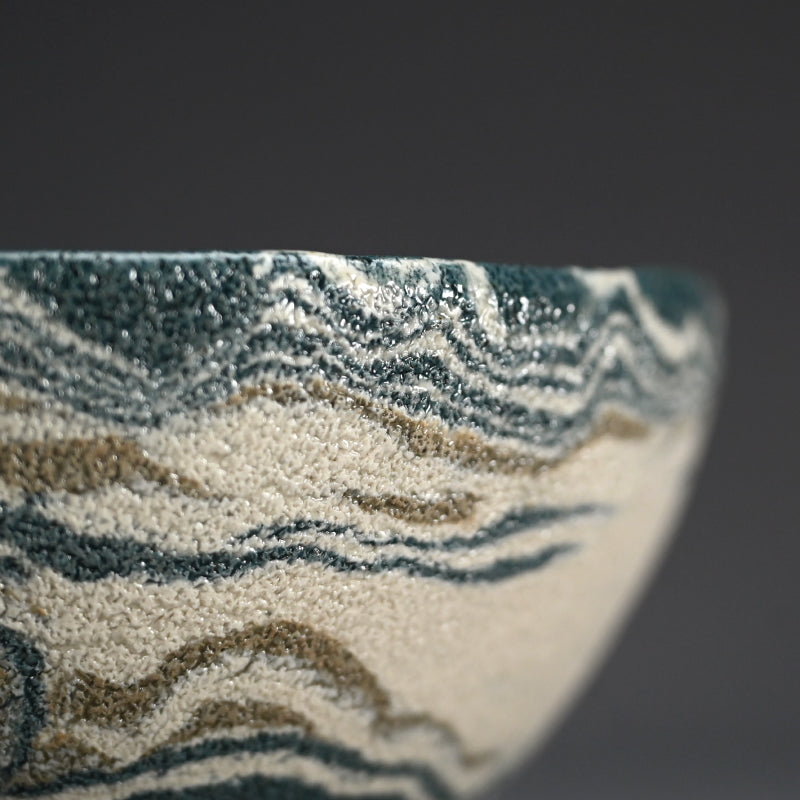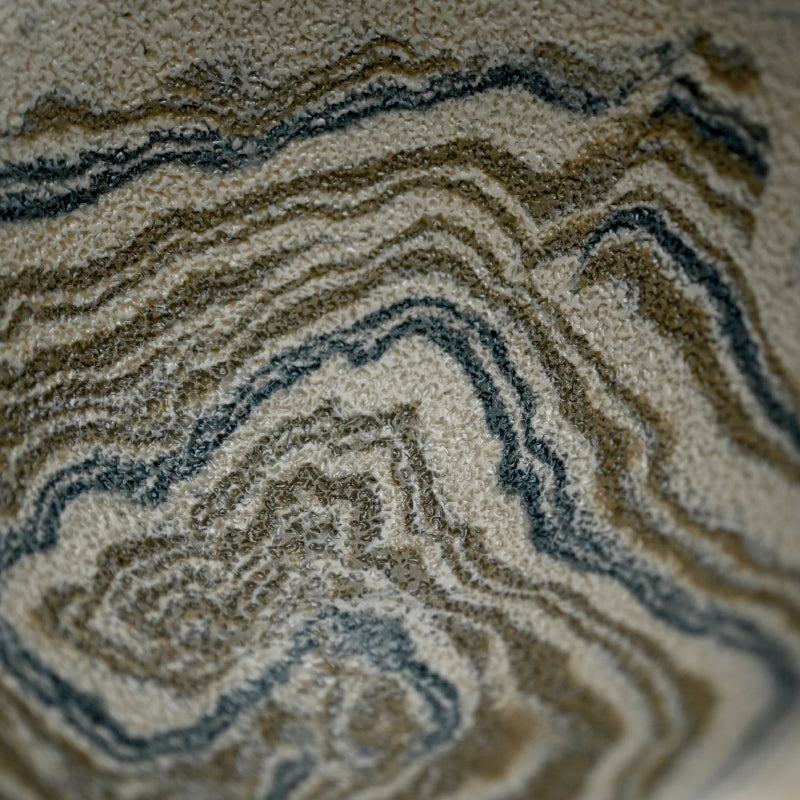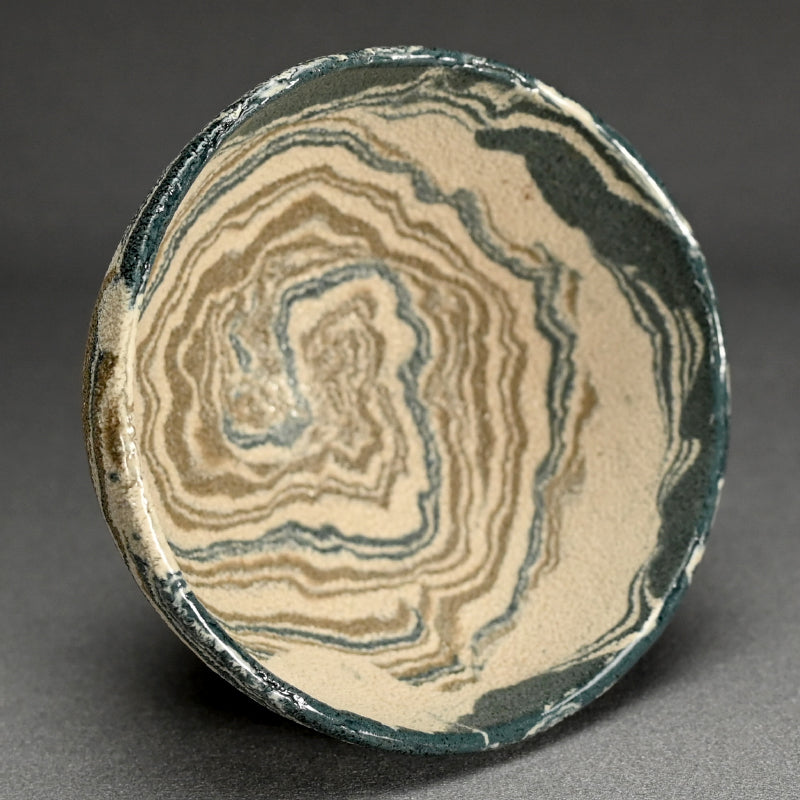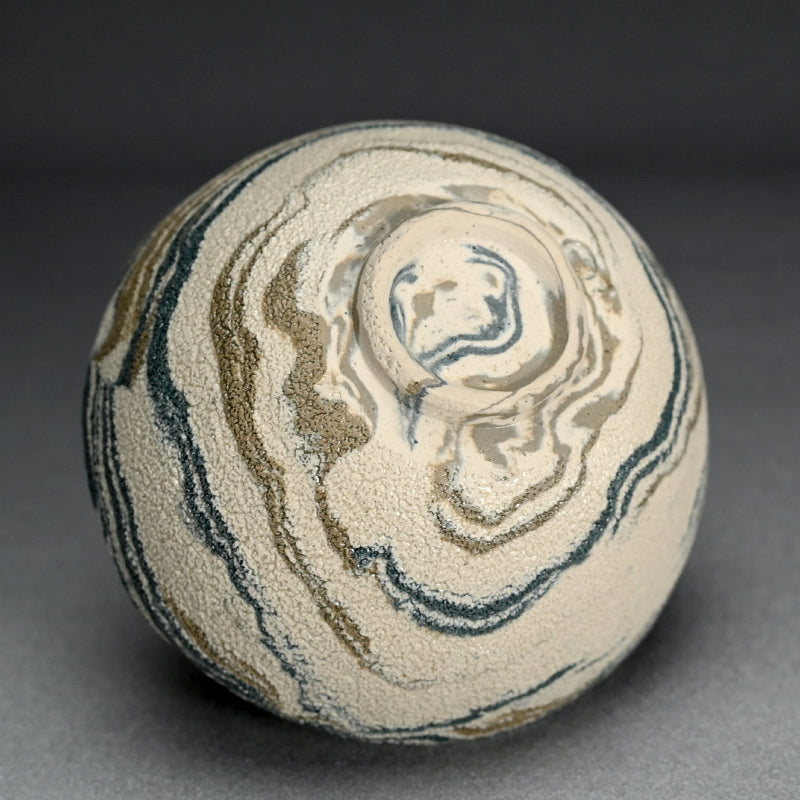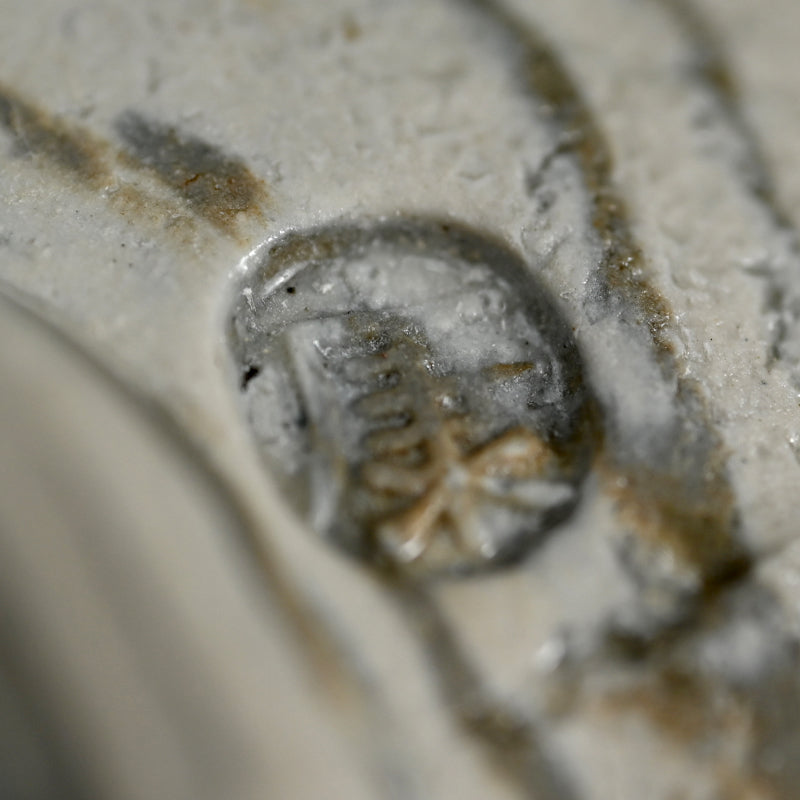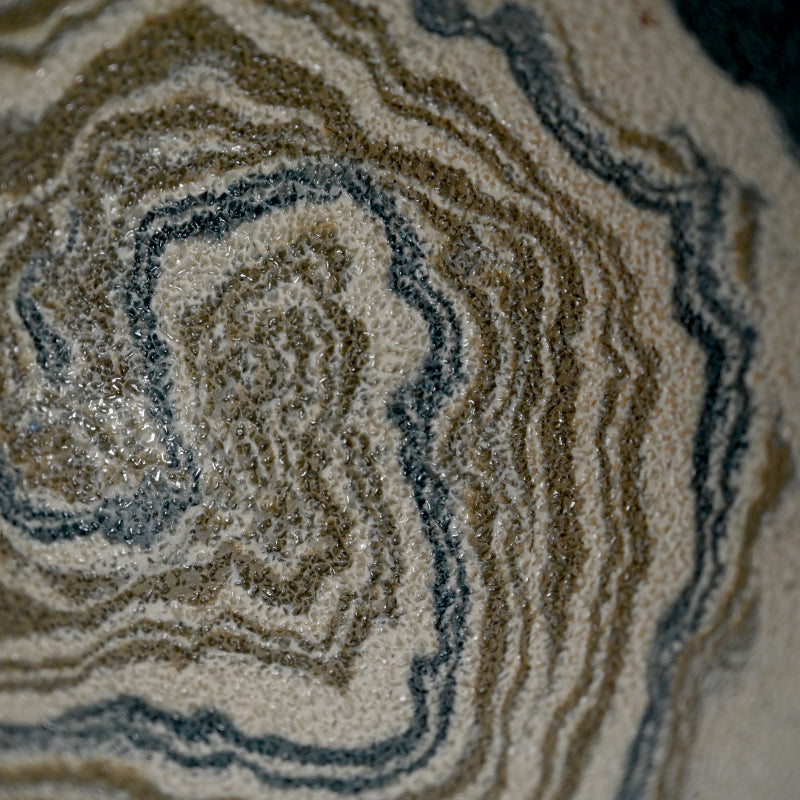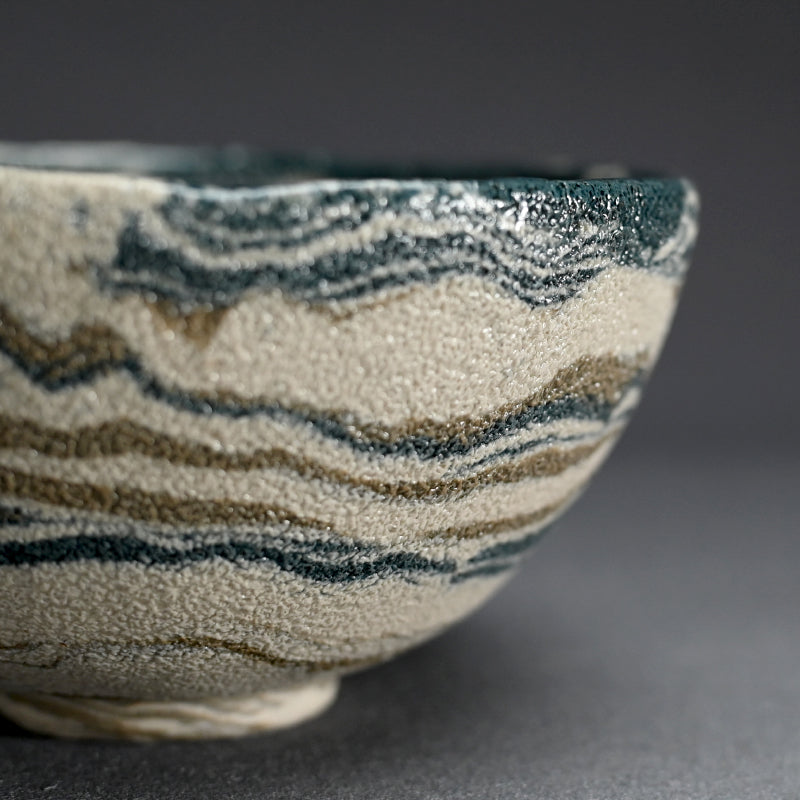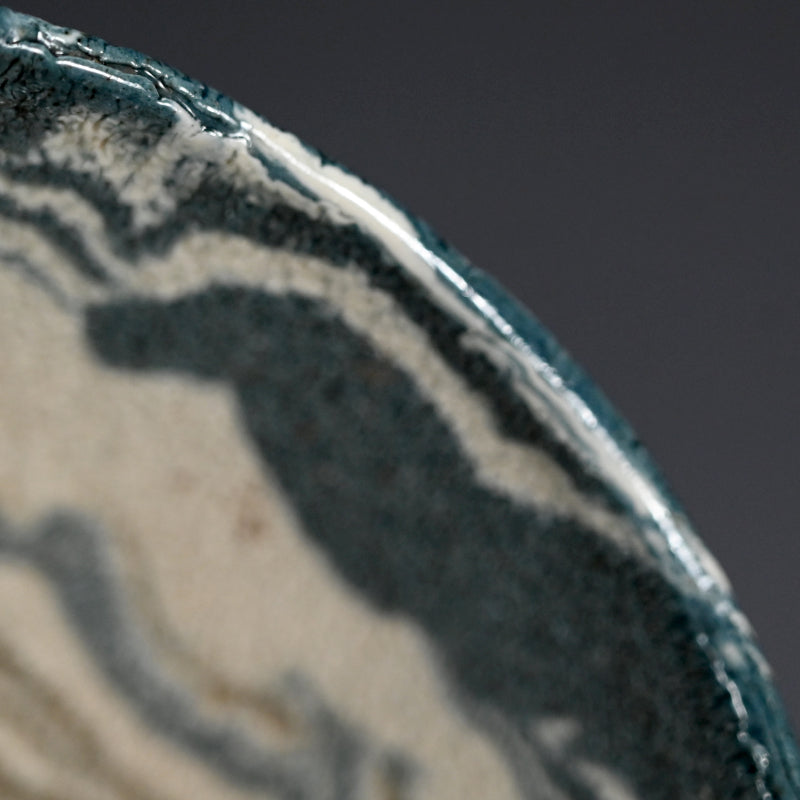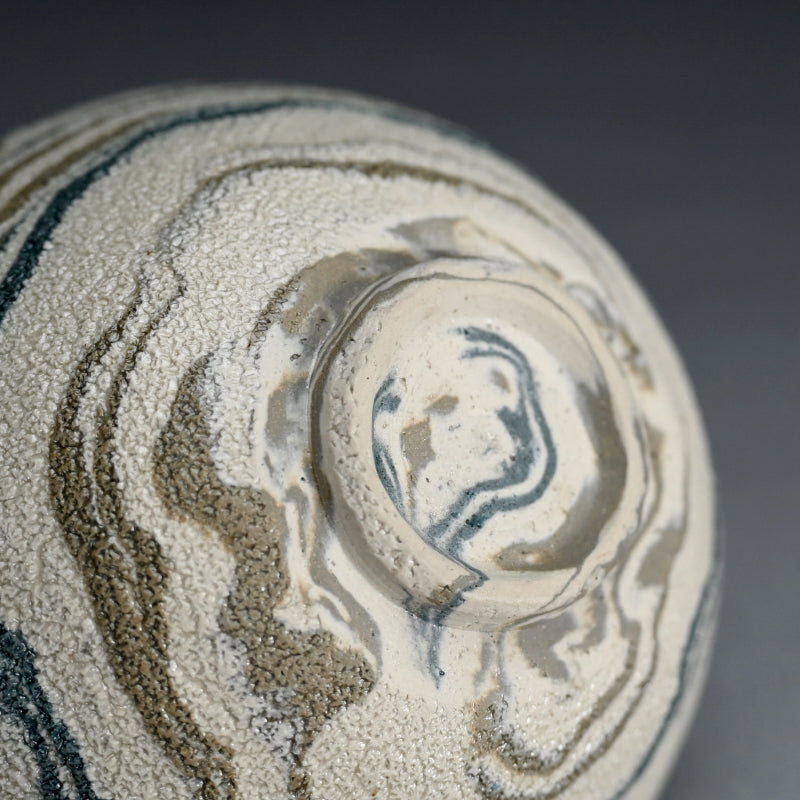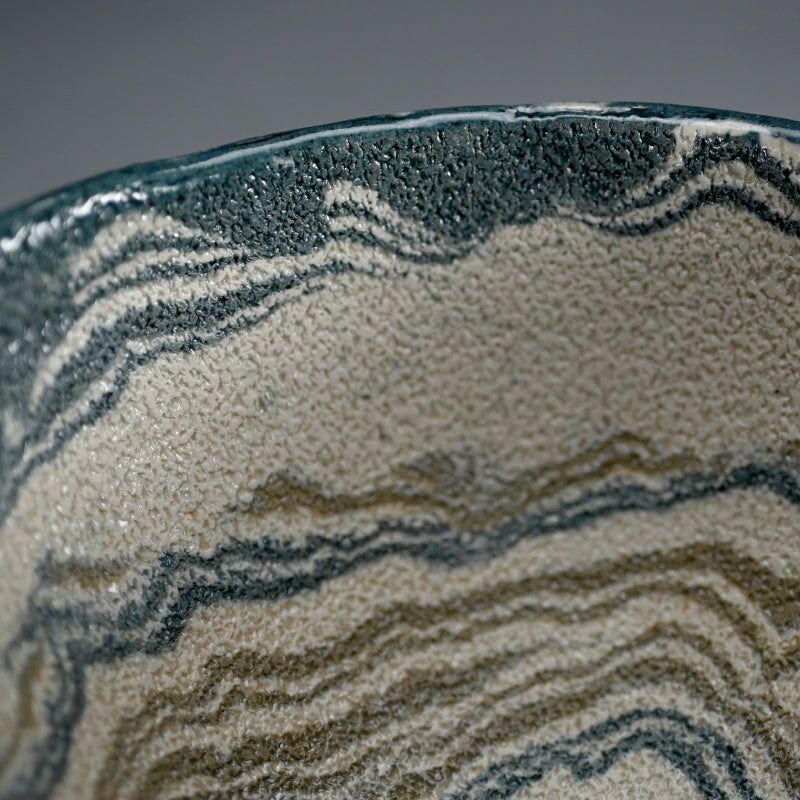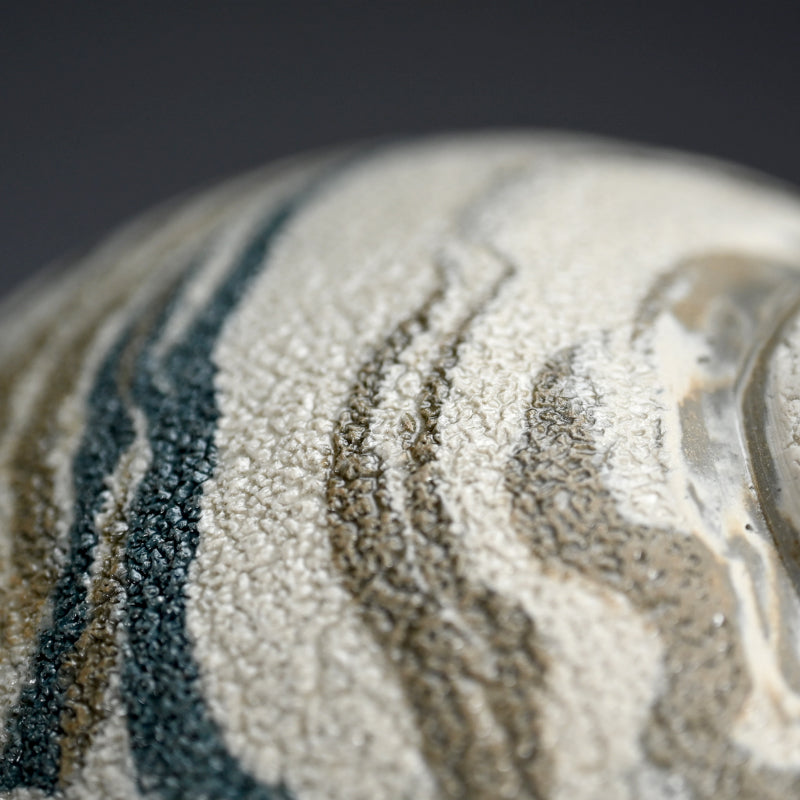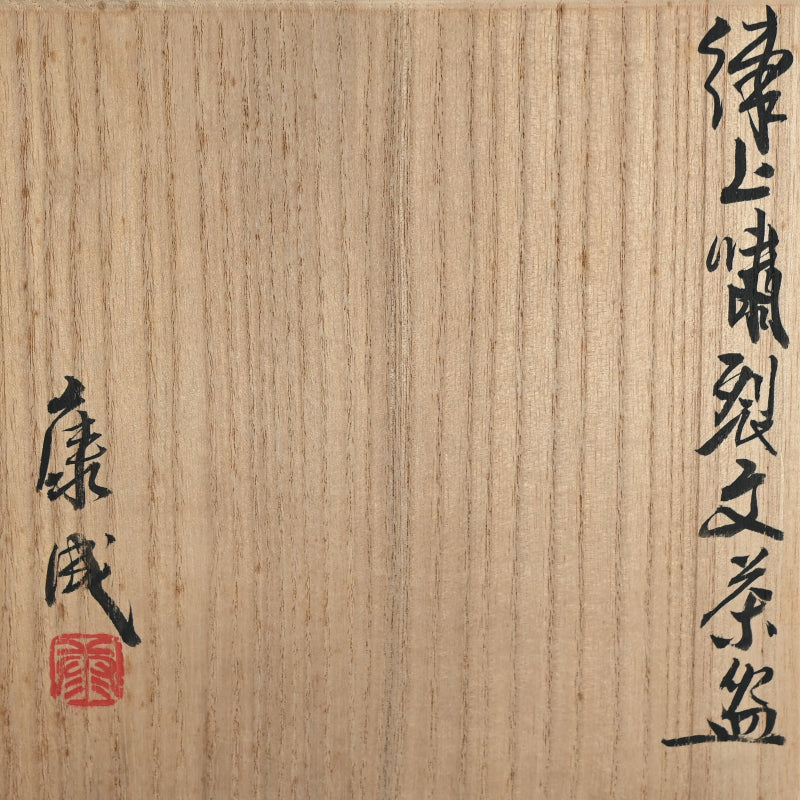Neriage Chawan Tea Bowl ー松井 康成 "練上嘯裂文茶盌"
Neriage Chawan Tea Bowl ー松井 康成 "練上嘯裂文茶盌"
Item Code: MC1000
Couldn't load pickup availability
Marbled clay in earthy gray, white and green form a mapscape on the pebble textured surface of this wan-gata Chawan by Living Natilanl Treasure Matsui Kosei enclosed in the original signed wooden box titled Neriage shoretsu mon Chawan. It is 13.5 cm (5-1/2 inches) diameter 7.5 cm (3 ionches) tall and oin excellent condition. It comes enclosed in a second outer wooden protective box (niju-bako).
The Japan Times wrote “Kosei Matsui, a designated living national treasure, fused traditional techniques with his own creative expression to craft beautiful ceramics.” Kosei was born in Nagano in 1927. A deeply spiritual individual, he graduated the literature department of the prestigious Meiji University in 1957, then entered the priesthood, finding the life of a Buddhist recluse suited him. He was granted the temple Gessoji in Kasama three years later. There he established a kiln where he experimented with ancient Chinese and Korean techniques, including Neriage. In an effort to further his technique he began studying with (future) Living National Trasure Tamura Koichi, and began to submit works in earnest to public viewing in the late 60s. He was first recognized at the Dento Kogei Shinsakuten (National Traditional New Crafts Exhibition) in 1970. Following several more prizes there, he was awarded at the Nihon Dento Kogeiten National Traditional Crafts Exhibition two years later, and again in '73 at the Nihon Togeiten National Ceramics aexhibition. Shortly after that he was granted the important Japan Ceramics Society Award in 1974. Throughout his career he was highly lauded, recieving among many others the Order of Cultural Merrit (1988) as well as the JCS Gold Prize (1990); finally garnering the ttitle Ningen Kokuho in 1993 and the Order of the Rising Sun from his majesty three years before his death in 2003. He is held in the New York Metropolitan Museum of Art, Brooklyn Museum, Minneapolis Institute of Arts, MN National Museums of Modern Art, both Kyoto andTokyo, Victoria and Albert, Saint Louis Art Museum, Hiroshima Prefectural Art Museum and Art Institute of Chicago among many others. For more see Japanese Ceramics in American Collections (Baekeland, Frederick. 1993), Toh: vol.89 (1993), Japanese Studio Crafts: Tradition and the Avant-garde (Rupert Faulkner) or Japanese Ceramics for the Twenty-first Century. (2014).
Share
